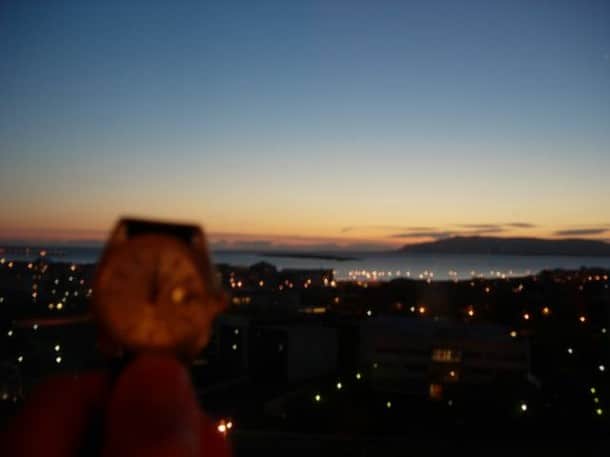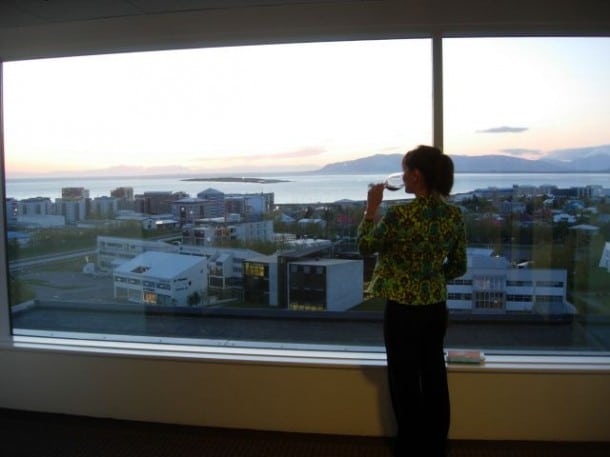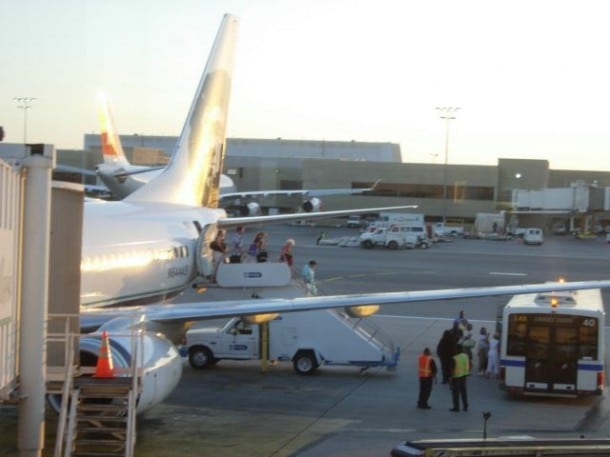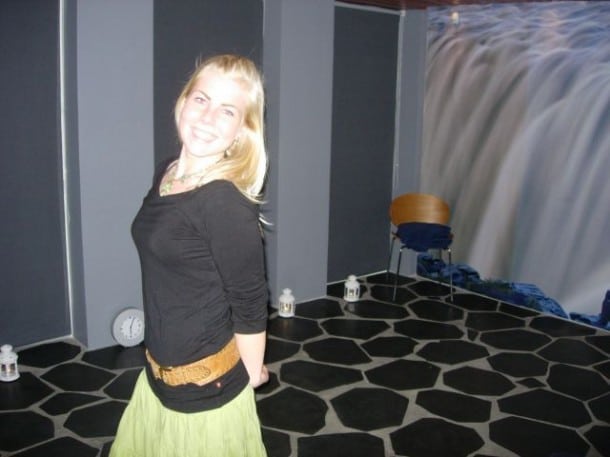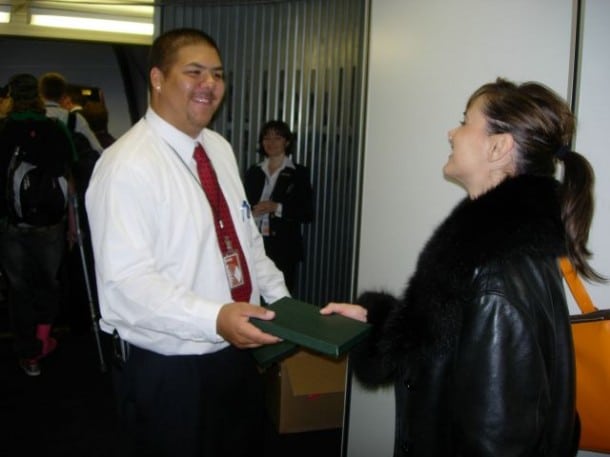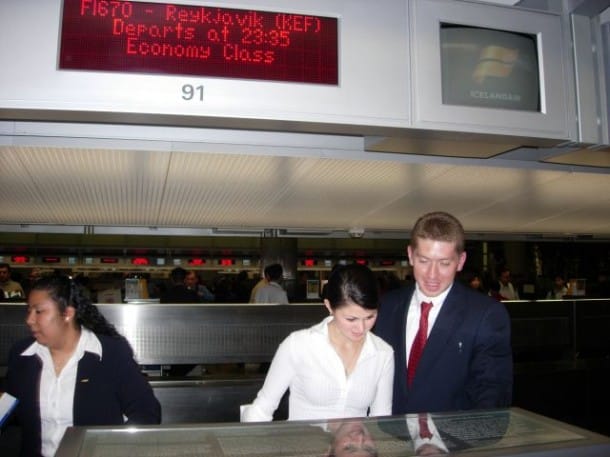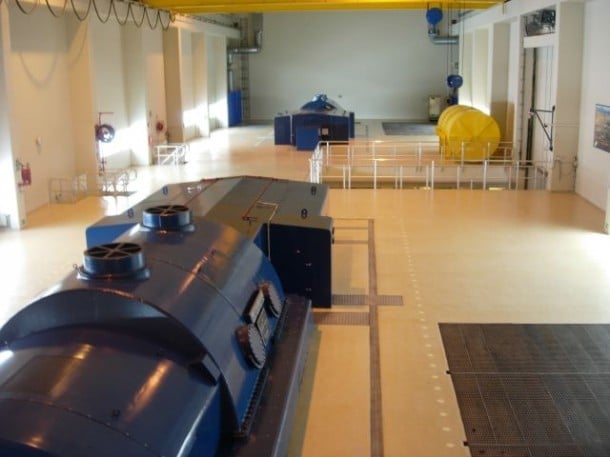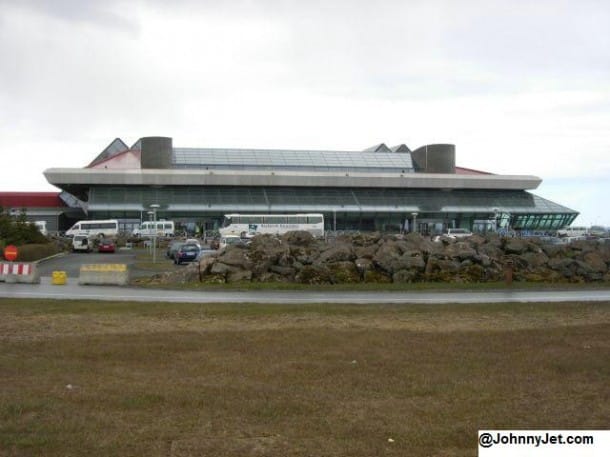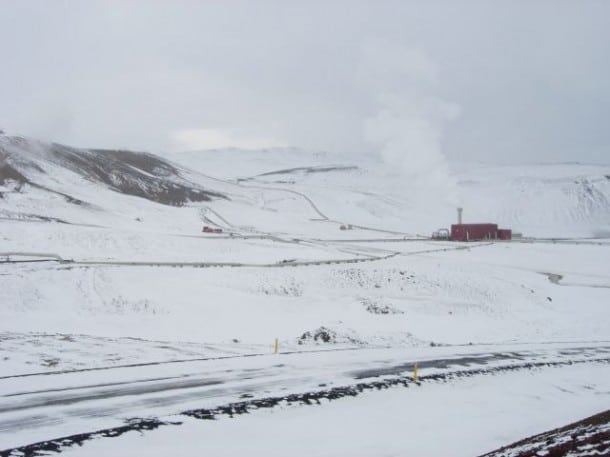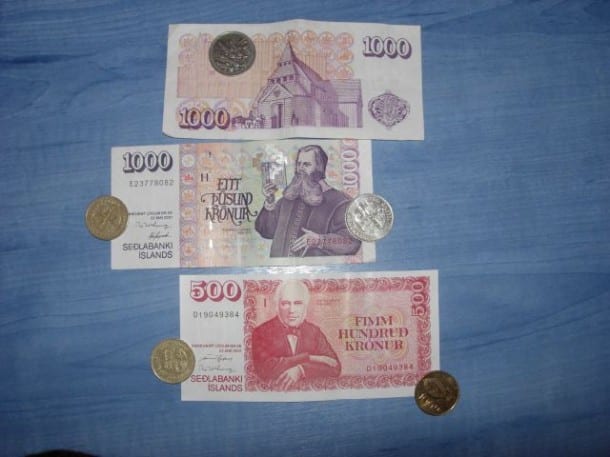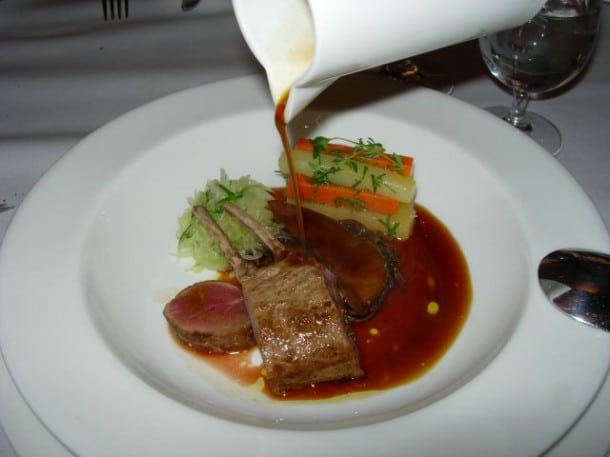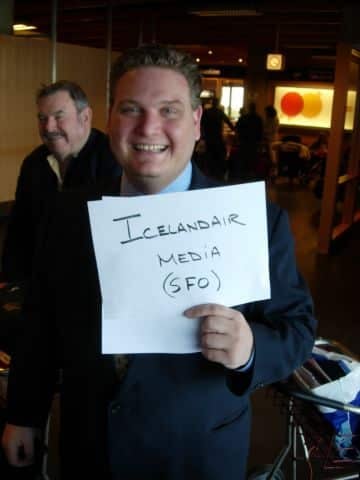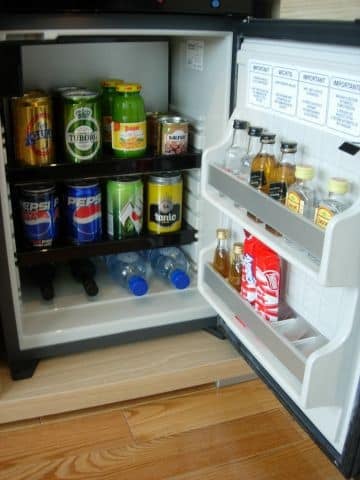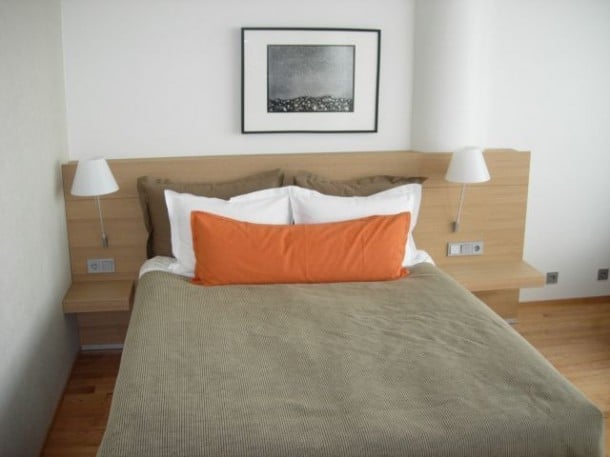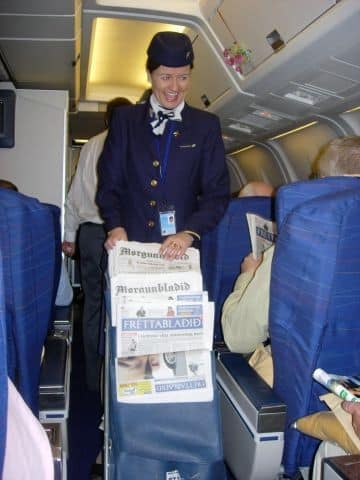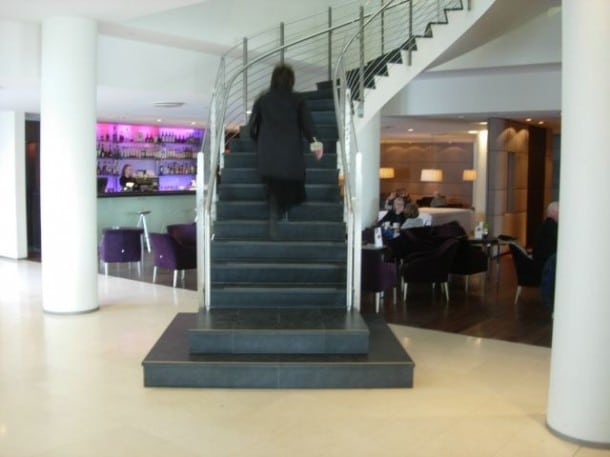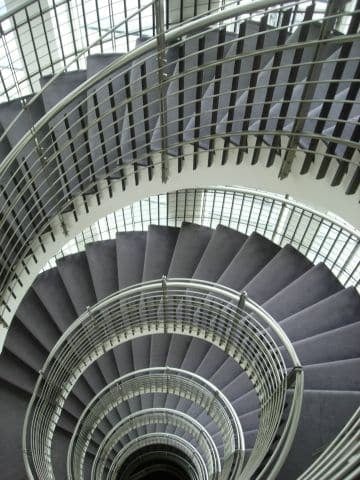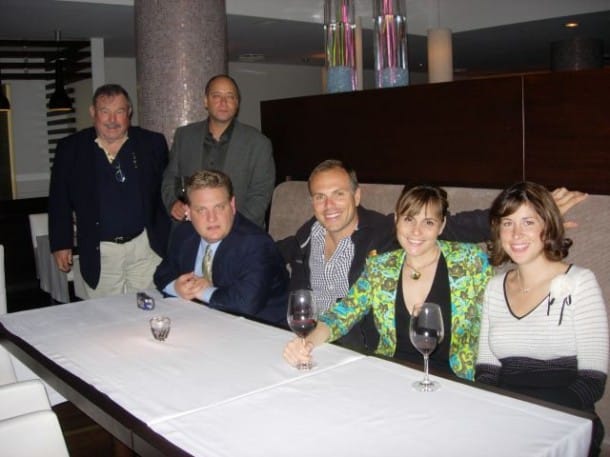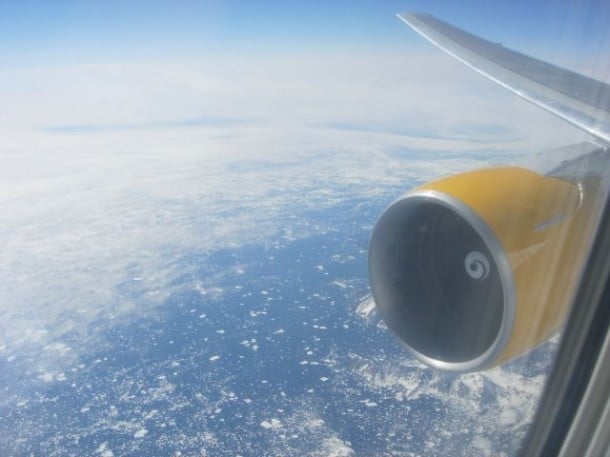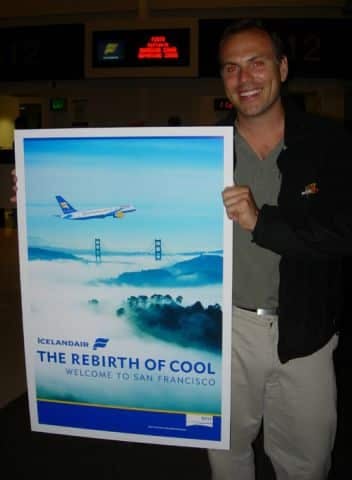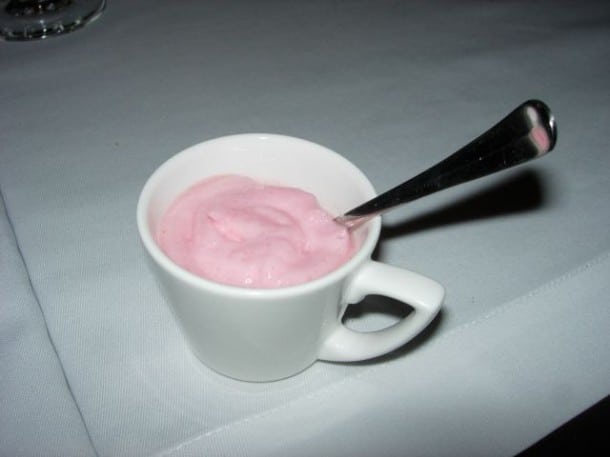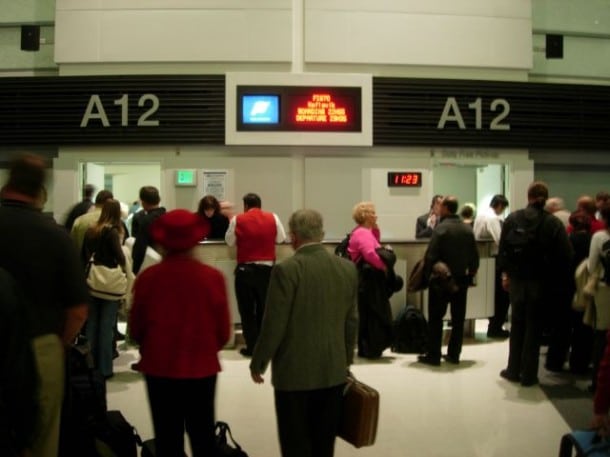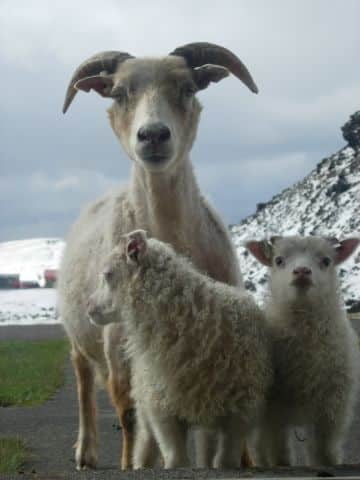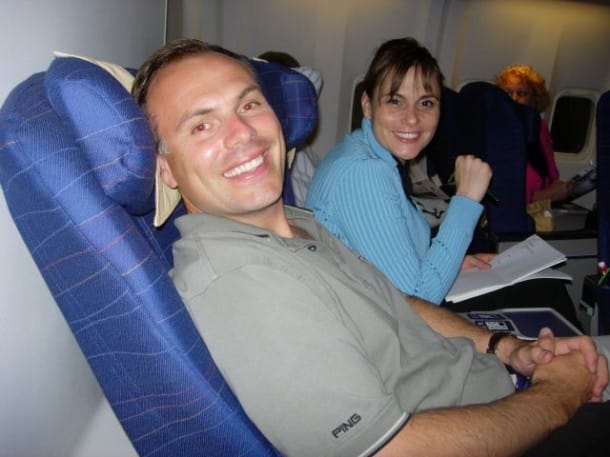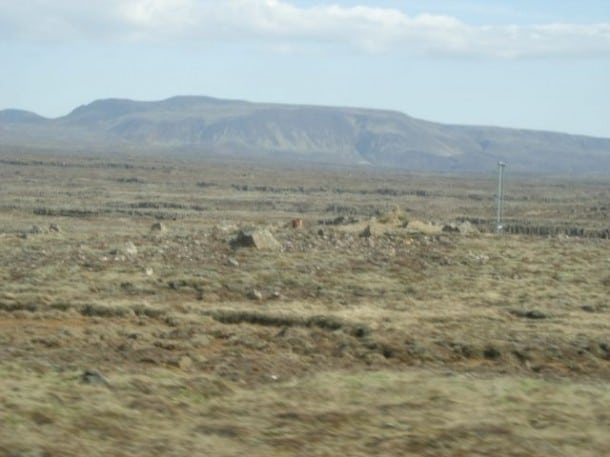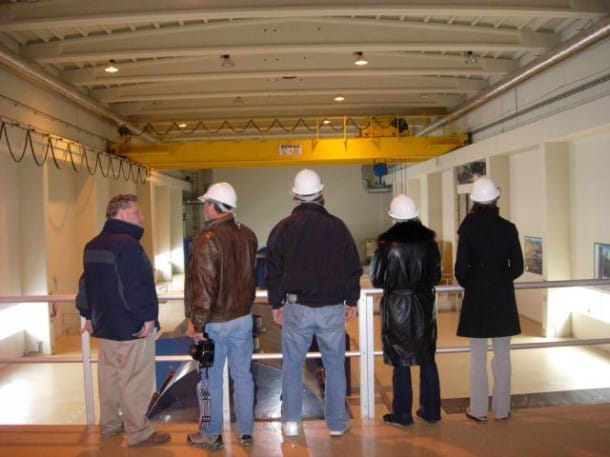Greetings from – you may not believe this – Iceland!
I was fortunate to be invited on Icelandair’s inaugural flight from the West Coast (San Francisco) to Reykjavik, and tour Iceland for a week. I admit it: At first I wasn’t sure if I wanted to go. I checked out the 10 day forecast, and the places on our itinerary looked damn chilly: 30-50 degrees, with snow showers. However, I have always wanted to see what many people refer to as Europe’s newest, hippest country. Plus who doesn’t want to take a dip in those geothermal natural baths you always see in travel magazines?
PREPARING FOR TRIP
I packed my warm clothes, and drove to LAX to catch my short flight to the Bay Area. I needed to be at Icelandair’s SFO counter by 9:35 p.m., to check in two hours before the flight — and then head off to a big celebration in the airline club with the mayor of San Francisco and prime minister of Iceland. Instead of flying in the day before, or even several hours in advance, I booked myself on the last (and cheapest) flight to SFO. (Tip: It’s usually cheaper to fly to Oakland, but I didn’t want the hassle of traveling 31 miles to SFO.)
CHECKING-IN AT LAX
At LAX the Alaska Airlines agent told me I couldn’t check my bag, because I had two separate reservations: LAX-SFO on Alaska, then SFO-KEF on Icelandair. I knew she was mistaken, and that I could check my bag all the way through to Reykjavik but instead of trying to talk some sense into her I kindly asked for a supervisor. As I expected, the supervisor quickly cleared everything up. (Tip #2: Never take “no” from someone who is not empowered to give you a “yes.”) Before handing over my bag to TSA (Transportation Security Administration) I checked the 3 letter airport code on my bag tag. I wanted to make sure it was headed where I was. I didn’t want to land in Iceland without warm clothes.
DELAYED FLIGHT
At the gate I learned that my LAX-SFO flight would be delayed half an hour because of a late arriving plane. I was bummed, because I would most likely miss the party. After sulking over a $2 airport chocolate chip cookie I boarded the plane, only to find we were now delayed indefinitely because of SFO weather. (Another reason to fly in and out of Oakland: better weather).
LAX-SFO
After an hour I was ready to see if I could get off the plane and call it quits, when the pilot said, “Fasten your seat belts — we’re cleared for takeoff.” At 9:37 we were in the air. I politely asked the flight attendant if she could make an announcement to allow people with tight connections to deplane first. She did, and everyone kindly complied as I and a few other Icelandair passengers raced up the aisle. I ran as if I were being chased by cops, and beat everyone to the counter. But by the time I reached Icelandair in the international terminal it was several minutes after 11, and the check-in agents were cleaning up to go home. When they heard me run up, huffing and puffing, they looked at me like I was a freak and out of luck. Not a good sign! I took a hit of my asthma inhaler, and told them about my late flight. They said they thought it was too late, but called the gate supervisor to check. He said no, but after the agent reminded the supervisor there was no other flight to Reykjavik for a couple of days, the agent printed boarding passes for me and another couple who showed up a minute afterward from a late United flight. We were told to run with an escort to security, then to the gate.
DOUBLE CHECK BAG
We made it with a few minutes to spare. The smartest thing I did was firmly but nicely ask the Icelandair agent who checked me in — and again at the gate — to please double check on my suitcase from Alaska Airlines. They told me it would most likely not make it, but I gave them my bag tag locator number and said, “I really need it!” That must have worked, because before the agent shut the plane door she came down the aisle to tell me my bag made the flight. That made me feel a lot better! Unfortunately, when I saw the couple had I raced with two days later, they were still waiting for their luggage.
BOARDING THE INNAUGURAL FLIGHT
It turns out I didn’t miss the party after all — it was rescheduled at the last minute. That’s okay — I was just happy to make the flight. As passengers stepped into the plane they were given a present to commemorate the inaugural flight: a nice leather Icelandair passport case. On the plane I met five other travel writers: Teresa Rodriguez Williamson from TangoDiva.com; Bob Ecker, a freelance writer for Travel, Wine & Food; Heather Bradley from SOMA magazine; Dennis Cavagnaro from Stars and Stripes Magazine, and Janos Gereben of the Post Newspaper Group. We would all tour Iceland together, so I was relieved they all were very nice. We sat near each other in Icelandair’s Saga class. That’s the name they use for their business class (they have no first class, just coach and business). Saga refers to Icelandic documents written anonymously in the 12th and 13th centuries, about the lives of specific people and entire communities.
ICELANDAIR
Icelandair has been flying since 1937, and has long been known as one of the cheapest ways to get to Europe from North America. It has service from New York, Baltimore, Orlando, Minneapolis, and now San Francisco – all through Iceland. The new SFO service flies to Reykjavik on Mondays, Wednesdays, Thursdays, and Saturdays through Aug. 31. They will then fly only on Wednesdays and Saturdays until Oct. 15, before stopping for the winter. For more info on Icelandair’s fares and special stopover packages that include connecting flights to major European capitals; call 800-223-5500, or click on www.icelandair.net.
TRAVELING IN STYLE
Our Boeing 767-200 series plane did not look particularly new. The Saga seats were not state of the art; they did not give passengers much space, and there was no leg rest or electric outlets for computers. However, the seats were comfortable, and we were able to sleep on the 4,200-mile flight that took only 7 hours and 40 minutes (40 minutes faster than expected). Who knew you could travel from San Francisco to Europe that quickly? Not me! For passengers who couldn’t sleep, or wanted to stay awake, Icelandair offered personal DVD players with a bunch of movie options. The best part about the flight, though, were the flight attendants. They were really friendly and attentive, and wore cool hats. They served two hot meals, and both were quite tasty. Dinner was a choice of chicken with mushrooms, or fish over sliced oranges and jicama (they called it salad). Breakfast was a choice of pancakes, eggs or fruit. The flight attendants also handed Saga class passengers amenity kits that had something I’ve never seen before: a travel-size laundry detergent. That must be left over from the days when Icelandair was known as the backpackers’ airline.
FLYING OVER GREENLAND
During breakfast the pilot said we were over Greenland, and would soon start our descent. Everyone lifted their window shades, and piercing bright sunlight filled the cabin. Greenland looked so amazing — and cold! There were snow-capped mountains, icebergs and ice-blue water. For the first time in a long time, I felt like I was going to a foreign land. And indeed I was. To give you a better feel for the flight I put together some pictures and videos I took. It will take a minute to download, so be patient. (If you have a dial-up modem, don’t even bother; it takes days.)
LANDING IN ICELAND & VIDEO OF FLIGHT
Landing in Iceland, I was very surprised at what I saw – or, rather, didn’t see. It looked nothing like Greenland. Iceland was a mix between Kona (Hawaii) and Alaska. It was very barren — no trees, just lava and snow-topped mountains. Now I saw why this place is called the “land of fire and ice.”
AIRPORTS
Iceland has two airports. Reykjavik (airport code: RKV) is the former international airport, now used for domestic travel only. It sits on the edge of downtown Reykjavik, and is very convenient. Unfortunately, this is not the airport for international passengers (except Greenland and the Faroe Islands). The international airport, Keflavik (airport code: KEF) is 31 miles southwest of Reykjavík. It was built by the United Stated during World War II, and the U.S. still maintains a military base nearby. The good news is that since being remodeled in 2001, Keflavik is much nicer and larger than the domestic airport. The place is plush, and with its modern design and wood floors reminded me a lot of the Copenhagen airport. Keflavik also has glass gangways, which make getting on and off planes so much more enjoyable. Another enjoyable factor is that I seriously have never seen more beautiful women in an airport than I did at Keflavik.
CUSTOMS & MONEY
Going through passport control in Iceland is a pleasure. For one, the line wasn’t long. For another, I didn’t have to fill out any custom forms – I just showed my passport. For a third, all the agents were fast, friendly and spoke perfect English. Baggage claim took a while, but I didn’t care. I was just so happy (and impressed) that mine made it! After getting my bag I hit the ATM, like every visitor should. (Tip: Don’t exchange money. The best exchange rates are found traveling international is using credit cards and ATM’s). The Icelandic currency is the Króna (abbreviations are ISK, IKR or KR); the current exchange rate is 1.00 USD = 64.57 ISK. Just think that every 1,000 ISK = approximately 15 USD. That rate is not very favorable to Americans, and as you will see, Iceland is really expensive.
GETTING AROUND
Iceland has no railways or highways. The main road here circles the entire island; appropriately, it is called the Ringroad. It was completed only 30 years ago, and for most of its 900 miles is a paved two-lane road. It’s considered one of the most desolate and scenic routes in the world. After traveling only part of it, I agree. Sections of the Ringroad are closed in the winter and during bad weather, so be sure to get up-to-date road info at www.Vegag.is. Taxi transportation from the international airport to the city is expensive. A four-passenger taxi costs approximately 8 ISK ($123 USD) for the 40-50- minute ride. Ouch! The best bet is either to rent a car, or take the Flybus which is 1,150 ISK ($17.80) per adult. Children 12-15 pay half price, while those under 11 ride free.
DRIVE TO THE NORDICA HOTEL
We were greeted by Michael, Icelandair’s press guy and he escorted us to our van rental. The 45-minute ride to our hotel was like driving on the moon. There is nothing to see. I started to get worried that the whole country would look like that. Thank God it doesn’t. Here’s a video I took of different parts of the moon — I mean, Iceland. Once we got to the outskirts of the town we started to see grass and trees — phew!
We checked into the 4-star Nordica Hotel, the largest in Iceland. It has 284 guest rooms and suites. It’s also one of the two nicest hotels in the country (the other is Hotel Loftleiðir, near the domestic airport). The Nordica is very modern and hip, and has a similar chic feel to a “W.” The huge lobby offers plenty of places to lounge, including the sociable bar. They have fast elevators, and a conveniently located sleek spiral stair that goes all the way up the 9-story building. My room had spectacular views and was clean and bright, with natural wood floors and a comfortable bed. The shower had good water pressure and provided mini soaps and shampoos (most of the others we stayed at only had liquid soap). Interestingly, every hotel I stayed in — six different ones over six nights — had twin comforters, even on the full-size beds. The comforters were wrapped in the top sheet, and had one large blanket over it. I guess the twin comforters prevent fighting for covers with your bedmate? Unfortunately, I didn’t get a chance to test out that theory. Room rates range from 15,100 ISK ($234) to 120,000 ISK ($1,800). Icelandair Nordica Hotel and Spa, Suðurlandsbraut 2, 108 Reykjavík; tel: 354-444-5000.
INTERNET
What’s incredible about this country is that at every hotel I stayed in, all over Iceland – including very remote areas, and hotels ranging from 4 stars down to 1, there was free wireless high-speed internet access in the lobby. Now that is impressive! Most did not have wireless internet in the rooms, but the Nordica did provide in-room internet using an ethernet cord and password.
CELL SERVICE
Speaking of communications, my International GSM phone worked practically everywhere, including remote towns. That wasn’t because of my new SIM card chip, but because Iceland — like most European countries – has such advanced cellular service. About that new SIM card: It’s called Talk Abroad, and I got it from my friends at Cellular Abroad (800-287-3020). This international prepaid SIM card that allows you to roam in over 100 countries worldwide, including all of Europe and most of the world’s popular travel destinations. The phone number is in Liechtenstein, and the account comes with €18 ($22) of prepaid call credit. You can add additional talk time by buying credits before or during your trip. A $29 recharge gave me 30 minutes of outgoing talk time. That’s because I was in Zone 1, which is most of Europe and includes calls to the U.S. The best part is that every incoming call was free! These rates are more expensive than buying individual SIM cards, but it is a lot more convenient. Plus, you keep the same number wherever you travel — and it much cheaper than U.S. cell phone providers.
NORDICA SPA / TIPPING / GIRLS
The Nordica Hotel is not a good spot if you don’t have a car. The center of town is a solid 15 minute walk, and on a cold day that’s far (they do offer complimentary city center shuttle service). But this place is perfect for business travelers, and those who want all the luxuries and comforts of a fine hotel. My favorite part was the spa and workout room. Not only is there new exercise equipment, a juice bar and outdoor sauna, but there are also three different hot tubs, and roving masseuses who give customers free 3-4-minute shoulder massages. They don’t work for tips, either. In fact, no one here tips, not even for dinner or taxis. The Spa is a perfect place for guests to meet locals, since more of them have gym memberships than hotel guest. Icelanders are very cool, friendly and quite beautiful, so don’t be shy starting up conversations. The daily entrance fee to the Noridca Spa is a whopping 2,500 ISK ($38). No wonder the massages are free.
FOOD IN ICELAND & VOX RESTAURANT
For dinner the first night we went to what is regarded as one of the top restaurantsin Iceland. VOX is conveniently located in the Nordica hotel. Unfortunately for me, the two most popular menu items in practically every restaurant in Iceland are seafood and lamb. I don’t eat either. Fortunately, almost every restaurant also serves beef, chicken and vegetarian dishes. There are also a few Asian, Italian and fast food restaurants (Pizza Hut, Subway, KFC and McDonald’s).
VOX’s food, presentation, service, and atmosphere were excellent. We started off with what I thought was a cute-looking mini-ice cream cone, but instead of being filled with sorbet it was codfish. Yuck! My colleagues raved about it, though, as well as the pate with lamb accompanied by a blueberry, vanilla, anise jelly and apple syrup. What I did love was the bread, the carrot soup and my main entrée, filet mignon. The others had a shellfish appetizer with lobster, shrimp and scallops, and for the main dishes artic char in a creamed corn sauce or lamb. We had two desserts: a light rhubarb something, and a fashionable Louis Vuitton- logo looking chocolate mousse with mango sorbet. Yum! We also ate breakfast at VOX the following morning. There was a well-stocked American/European buffet for 1,500 ISK ($23). VOX Restaurant: 354-444-5050.
SUMMER NIGHTS
After dinner we had drinks in the 8th floor business center. When we talked to some locals, we learned they can’t have dogs in the city without a permit. (They said city living is considered cruel to dogs). We watched the sun go down, and marveled that the sky never got completely dark. This is what it looked like at 11pm, and 1 a.m. (after which I went to bed). The skies will continue to get lighter until June 22. The winter, though, is the opposite. The sun is up for only a few hours, and on clear cold nights you can see the northern lights (Aurora Borealis).
ABOUT ICELAND
Because Iceland is such a fascinating, exotic place and many people (including me) have little information about the country, I will offer some interesting facts, tidbits and history. Books have been written on each subject alone, so if you want more info just check out the resource section below, or visit your local library.
First, Iceland is in the Western European Time Zone, which puts it seven hours ahead of California and four hours ahead of New York. Iceland is in the north Atlantic Ocean, between Greenland and the Faroe Islands, Scotland and Norway. The entire country is just south of the Arctic Circle (except for the small island of Grimsey). Iceland is filled with arctic desert plateaus, sandy deltas, volcanoes, lava fields, glaciers and waterfalls. Only 1.3% of the country is grassland, just 1.5% is used for agriculture, and a mere 1.5% is forest (I told you there weren’t many trees). Three percent of the land is lakes, 11% is lava fields, 12% are glaciers, and only 21% — the lowlands near the coast — is considered habitable.
SIZE & POPULATION
At 39,756 square miles, the country is about the same size as Kentucky or England, but there are a whole lot less people. With a population just under 290,000, there are twice as many sheep and cars. Most residents live near the capital city of Reykjavik (which means “smoky bay” in English, because that’s what it looked like when the Nordic sailors came up and saw all the volcanic steam.) Others are spread out along the coast (the highland interior is uninhabitable).
MID-ATLANTIC RIDGE & ENERGY
Iceland is a young island (geologically speaking). It started to form only 20 million years ago, from a series of volcanic eruptions on the Mid-Atlantic ridge. The ridge runs through the middle of the country. As the North Atlantic and Eurasian plates pull apart, magma rises to fill in the spaces. The country is growing 1 centimeter per year. The big joke there – because it continues to grow — is that soon Iceland will take over the world. With its Mid-Atlantic Ridge location, Iceland is a hot spot of volcanic and geothermal activity. What’s awesome about the geothermal activity is the natural hot water supplies that are both cheap and pollution-free. However, in some places it takes a minute or two for the water to heat up, and it has a sulphur smell and taste. Another reason the air here is so clean is that many rivers provide inexpensive hydroelectric power. Visitors can get a first-hand look at Iceland’s power by visiting the Krafla Landsvirkjun power plant in Myvatn. Landsvirkjun, Haaleitisbraut 68 201 Reykjavik; tel 515-9000.
HISTORY & TIDBITS
Iceland was settled by Norwegians and Vikings during the late 9th and 10th centuries A.D. Tradition says the first permanent settler, a Norwegian Viking, made his home where Reykjavík is located. Later Iceland became part of Denmark, which it remained until 1918. After independence it kept its ties to the Danish crown until 1944, at which point it became a republic.
I knew many Scandinavian countries follow Norse tradition, using patronymics rather than surnames. But I didn’t know most Icelanders’ given name is followed by his or her father´s name, then the suffix -son or –dóttir. For example, if I lived in Iceland my name would not be Johnny Jet, but rather Johnny Francisson (my dad’s name is Francis). That can be confusing, but thanks to countless medieval documents, many Icelanders trace their ancestors back to the Viking Settlement. Because of this, and Iceland’s location in such an isolated area with limited immigration over hundreds of years, it is regarded as the genetically purest country in the world. Here’s an article on how scientists are now exploiting this phenomenon.
WEATHER
It’s not surprising that Iceland does not get real hot — but it also doesn’t get ridiculously cold either. January temperatures in Reykjavik are similar to New York City: about 0°C (32 F). In addition, there is not a lot of snow. The mild climate originates with the warm ocean currents from the Gulf of Mexico, and travels via the Gulf Stream. The hottest temperature recorded in the 20th century was 30°C (86F); the coldest was –38°C (-36F). The average summer temperature in Reykjavik is 10.6°C (51F) in July, with average highs of 24.3°C (74F). The big problem with Iceland’s weather is that it always changes. So bring all types of clothes, and dress in layers. When I was there we had unseasonably cold weather (30F-50F), snow showers — and the wind was fierce.
LANGUAGE
The first language here is Icelandic. It’s very different from Danish, and is not easy to learn or speak. The only thing I can say is “takk” (thank you), and a phrase that’s only to used late night in a bar (just kidding — even that is difficult to learn). Luckily, everyone here is taught English starting at age 10, and most people speak better English than me. Iceland is tourist-friendly, with many signs and menus written in both Icelandic and English. For those signs that aren’t, here’s a handy a Icelandic-to-English translator. The last notable fact for this week is that the standard of living is high, with per capita income among the best in the world. This is a socialist country, and health care is excellent. In fact, life expectancy is one of the highest in the world: 81.3 years for women, 76.4 for men.

